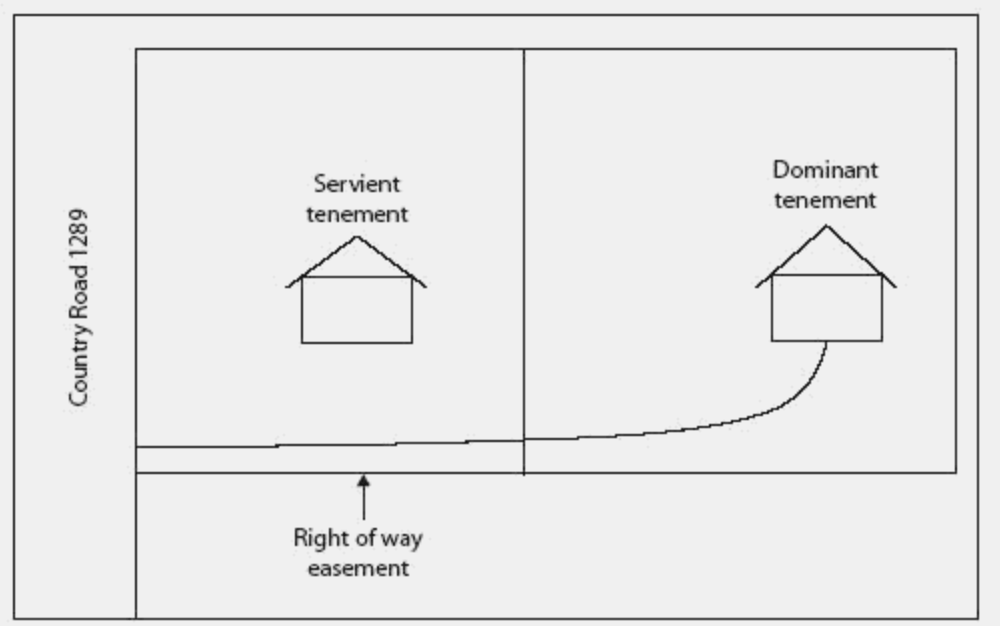A Guide to Land Right Of Way and Easements. This post along with good legal guidance can help prevent possible problems during a land purchase. A right of way is a kind of easement that can be created to allow others to travel or pass through your Mississippi land. In simpler terms, this is a property right that can be granted to others to use your property for a stated purpose. Similar rights also exist for government-held lands; commonly known as public lands, crown lands, or state lands. If you own a piece of land that is surrounded by others’ land from all sides, you can create an easement to get “a right of way” through the surrounding properties. I have personally bought many tracts of land without a right of way and been forced to either negotiate with the surrounding land owners or take court action to force a right of way.
If you have the patience and in some cases the will to go to court you can end up with a great piece of Mississippi hunting land or a great recreational tract of land. My best advice starts with, be prepared. Find and talk with someone that has been there and done that. If you have the will you can end up with a great tract of land and at a great price.
A right of way in context to transportation considers land usage rights for pipelines, railways, and highways. However, as real estate experts, we will focus on accessing land by foot, horseback, or bicycle in this article. Firstly, let’s try to decode the different aspects of “a right of way” and what it means to you as a landowner.
I have probably bought more land locked property in Pike County MS and I have no reason for that other than that is where I have lived most of my life and done more searching for land for sale in Pike County MS than anywhere else. Walthall County is probably where I have bought the second most in numbers of acres. You have to really search hard for these types of land tracts.
Types of Right Of Way
There can be different types of “right of way”. For instance, a bridleway can be legally used by pedestrians, equestrians, and cyclists whereas a footpath can only be used by pedestrians.
When it comes to property rights within the US, there are specific rights in place that exclude others to use a piece of land owned by someone. However, under certain circumstances, if a path is being used for a long period of time across private property, it may lead to an establishment of “prescriptive easement” for the general public.
On properties owned by the federal government, there’s a property clause in the constitution that allows United States Congress to regulate federal properties without any limitations.
The government entities in the US include cities, states, and counties. They also include public lands that are all managed by the federal government. Whether you’re a citizen or noncitizen, you can legally access these lands or you can recreate on this land without breaking any laws.

How to Grant an Easement?
An easement is a broader term that allows a person to use others’ land for a specific purpose. It may involve a specific portion or a larger area of the property. A right of way is also a form of easement that is generally granted by the landowner to other landowners. Easements are typically granted by a contract, deed, or will.
However, there’s another type of easement called “prescriptive easement” that is given by adverse possession. Popularly known as “squatting” in the real estate industry, a prescriptive easement is usually attained by someone’s continuous, adverse, hostile, notorious, or open use of another person’s land.
How Can An Easement Affect You As A Landowner?
Easements are essentially non-possessory rights granted by the landowner to others. They do not imply any ownership of the land. For instance, a right of way does not give any right to sell the property of another individual. Instead, they can use the land only for the stated purpose i.e. traveling.
An easement can also be terminated after a specified period. For instance, an easement granted for 20 years will be terminated after the expiration date. That said, if the easement is on a deed, it may not be terminated as easily and will remain in perpetuity.
How to Identify an Easement?
Most property deeds do not contain all types of easements. Many of the easements are stored in public records. An easy way to identify easements is to access your property details from the courthouse and closely examine them.
In case, you’re not able to find anything, visit the property you want to purchase and look out for the signs of easement like tire tracks, stormwater drains, or any other evidence of property usage.
If you still have questions regarding easements and a right of way, get in touch with the leading real estate experts at Mississippi Land Source or Doug Rushing Realty today!
